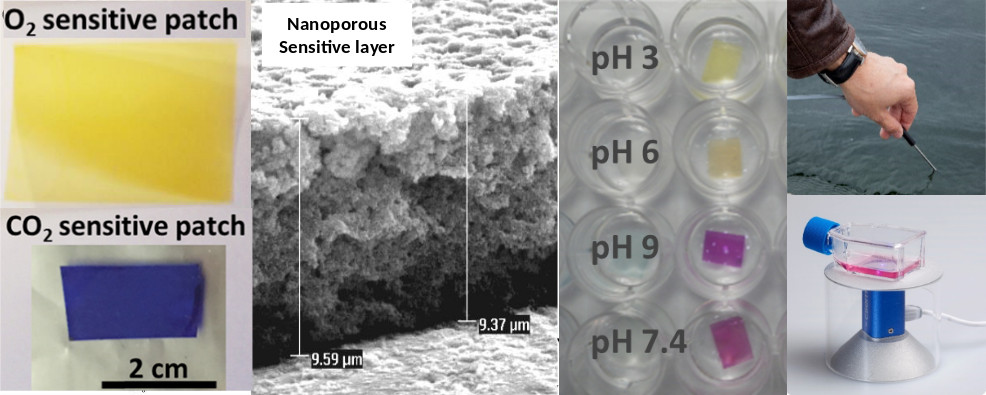Information
| Partner: | CSEM |
| Advanced technology: | Advanced nanotechnology for chemical sensing |
| Contact: | Guy Voirin |
| Email: | guy.voirin@csem.ch |
| Tel: | +41 032 720 5152 |
Advanced nanotechnology for chemical sensing

From nanotechnology to sensing applications
From nanotechnology to devices
WHAT IS our technology
The miniaturization of sensors together with the dramatic increase in portable computational power is currently generating a wide range of new applications for chemical sensors. These sensors can be used for applications related to environmental, health, aeronautics, or even food safety monitoring just to name a few. In order to be used with portable devices, sensing materials must be small, cost effective, and reliable. Sensors based on luminescence changes in the presence of specific molecules are promising candidates for this type of applications as these sensors can be interrogated with standalone compact optical readers that have wireless communication capabilities. CSEM has developed new optical sensitive patches based on a sol-gel nanoporous layer and these luminescent films are adapted for O2, CO2, and pH detection.
Nanotechnology based sensitive layers:
To make the most of the photosensitive dyes, new functionalized thin films based on nanoporous layers have been developed and can be deposited on various substrates such as steel, glass, and flexible plastic sheets. The host film is made of a double matrix: a microporous sol-gel network encapsulating the active dyes, which is embedded in a mesoporous coating. This hierarchical nanostructure brings enhancement to the sensing layers properties, such as optical signal, sensitivity, robustness, mechanical resistance, transparency, selectivity, and response time.
These nanoparticle based layers can also be deposited on MEMS structures to build sensors (electrical, electrochemical) using the nanoporous layer as a catalyst for sensing materials.
APPLICATIONS
Miniaturization of sensors for different connected applications
- Oxygen sensing in pressure sensitive paint (PSP)
- Oxygen sensing in cell culture, air quality, water quality, and breath monitoring
- Carbon dioxide sensing in buildings, food packaging, food preservation, and breath monitoring
- Carbon dioxide, oxygen, and pH sensing for water quality (rivers, swimming pools)
- VOC for buildings, cars
What’s new?
- Patented technology (EP 3184994, US 2017176332)
- Deposition of the sensing layer with high resolution on structured or fragile substrates (membranes)
- Reversible and disposable sensors for continuous monitoring
- O2 sensing capabilities with accuracy <0.2%, range 0-21%, and precision 0.3%
- CO2 sensing capabilities with accuracy 0.2%, range 3-12%, and precision <1%
WHAT’s NEXT
- Customization of sensor integration for extending the range of application
- Wearable sensors for health monitoring
- Adaptation of the sensing layer to new chemicals
INTERNATIONAL RECOGNITION:
- Innovation award CCI FS 2016 (https://www.csem.ch/Page.aspx?pid=37881)
- BioInnovation-Eclosion Prize 2015 (https://www.csem.ch/Page.aspx?pid=32622)
FOR MORE INFORMATION
Contact: Guy Voirin
Email: guy.voirin@csem.ch
Tel: +41 032 720 5152

